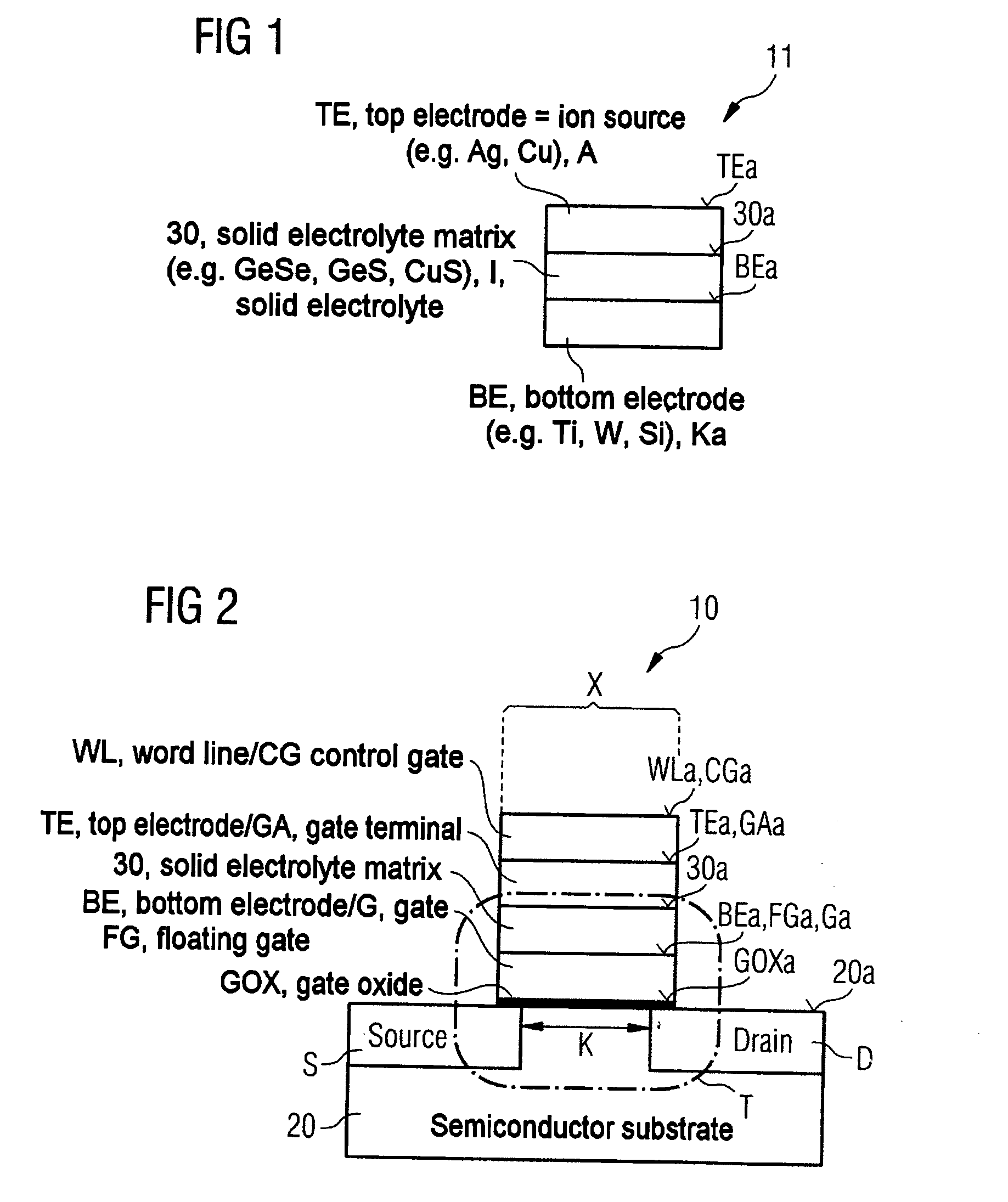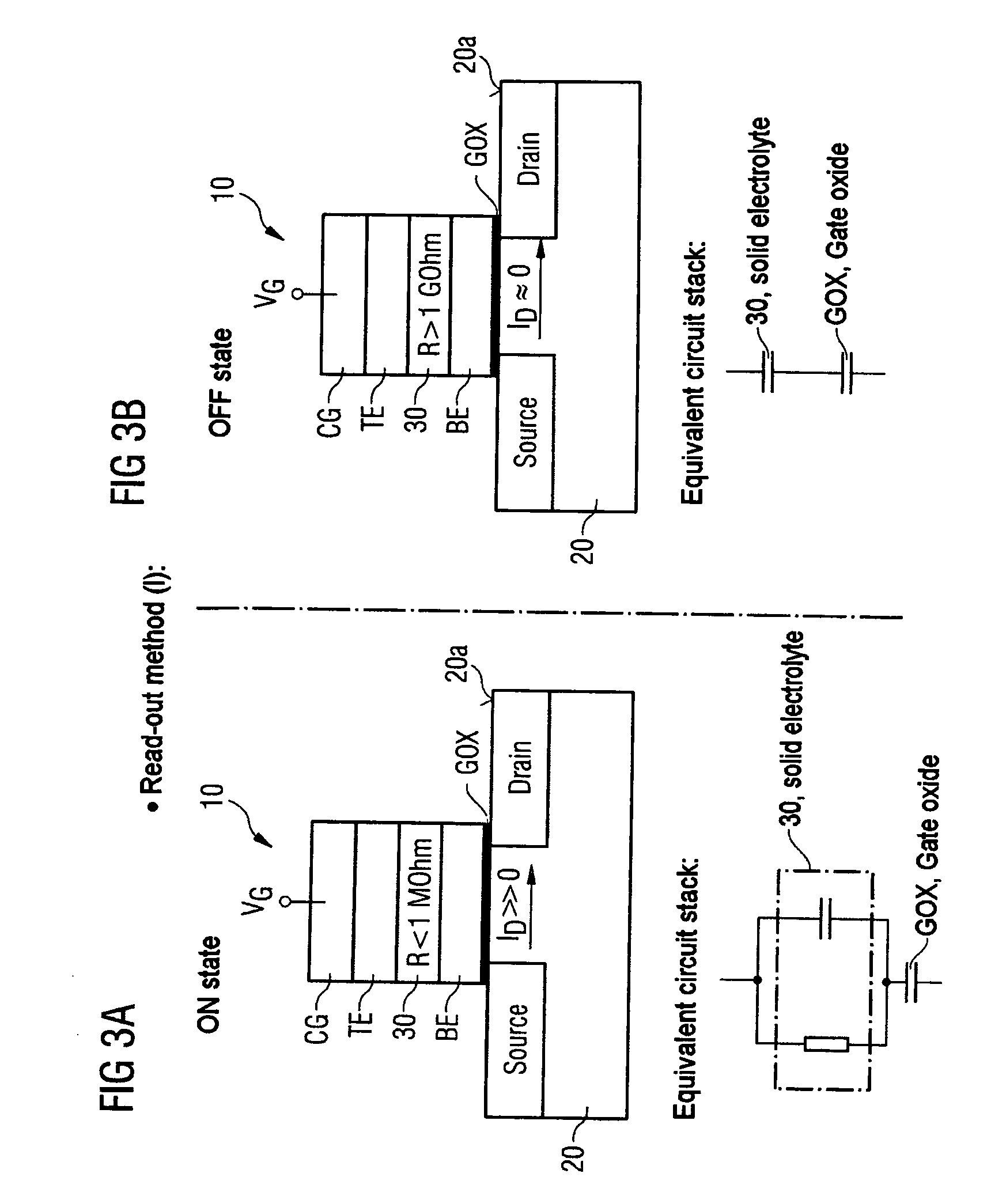Method for fabricating a semiconductor memory cell
a nonvolatile semiconductor and memory cell technology, applied in semiconductor devices, digital storage, instruments, etc., can solve the problems of not being able to integrate a nonvolatile semiconductor memory cell, and achieve the effect of simple and reliable design
- Summary
- Abstract
- Description
- Claims
- Application Information
AI Technical Summary
Benefits of technology
Problems solved by technology
Method used
Image
Examples
Embodiment Construction
[0054]FIG. 1 shows, in schematic and sectional side view, a memory element 11 of an embodiment of the nonvolatile semiconductor memory cell 10 according to the invention. The memory element 11 illustrated in FIG. 1 comprises a first or bottom electrode BE with a surface region BEa, a solid electrolyte region 30 arranged thereon with a surface region 30a and also a second or top electrode device TE provided thereon with a surface region TEa, which simultaneously serves as ion source or ion reservoir for the solid electrolyte region 30. In the case of the embodiment of the memory element 11 illustrated in FIG. 1, the bottom electrode BE comprises, e.g., titanium, tungsten and / or silicon. The solid electrolyte matrix of the solid electrolyte region 30 comprises GeSe, GeS and / or CuS. The top electrode TE as ion source or as ion reservoir comprises or contains, e.g., Ag and / or Cu.
[0055] The memory element 11 illustrated in FIG. 1 can realize two memory states. In state 1, only little me...
PUM
 Login to View More
Login to View More Abstract
Description
Claims
Application Information
 Login to View More
Login to View More - R&D
- Intellectual Property
- Life Sciences
- Materials
- Tech Scout
- Unparalleled Data Quality
- Higher Quality Content
- 60% Fewer Hallucinations
Browse by: Latest US Patents, China's latest patents, Technical Efficacy Thesaurus, Application Domain, Technology Topic, Popular Technical Reports.
© 2025 PatSnap. All rights reserved.Legal|Privacy policy|Modern Slavery Act Transparency Statement|Sitemap|About US| Contact US: help@patsnap.com



